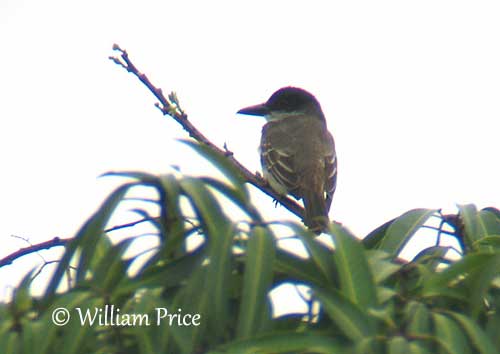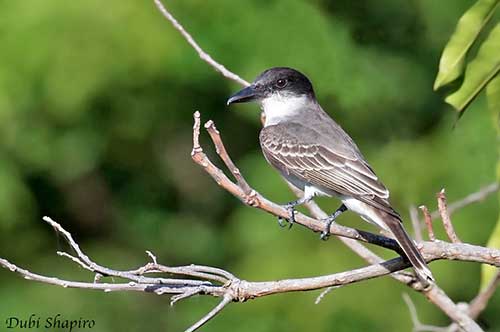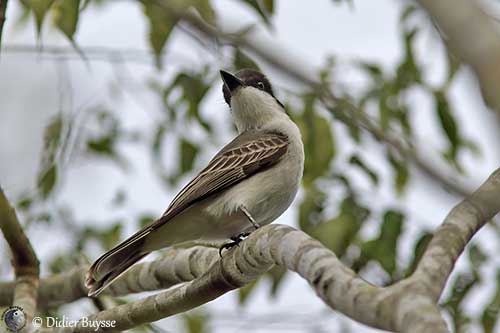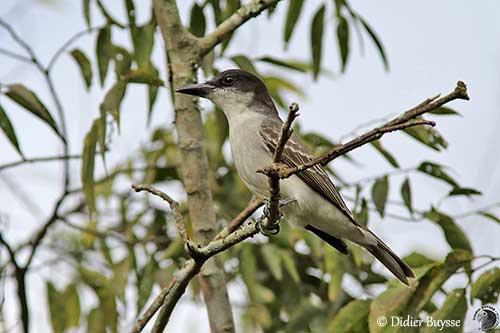
Fr: Tyran géant
Ang: Giant Kingbird
All: Riesenkönigstyrann
Esp: Tirano Cubano – Pitirre real (Cuba)
Ita: Re dei tiranni gigante
Nd: Cubaanse Koningstiran:
Sd: jättekungstyrann
Photographers:
Didier Buysse
Vision d’Oiseaux
William Price
PBase-tereksandpiper & Flickr William Price
Dubi Shapiro
Dubi Shapiro Photo Galleries
Text by Nicole Bouglouan
Sources :
HANDBOOK OF THE BIRDS OF THE WORLD Vol 9 - by Josep del Hoyo - Andrew Elliot - David Christie - Lynx Edicions - ISBN: 8487334695
BIRDS OF THE WEST INDIES – by Herbert Raffaele, Kristin Williams et Tracy Pedersen – Helm – ISBN: 9780713649055
Arthur Grosset's Birds (Arthur Grosset)
Cuba Explorer - Birds of Cuba - Endemic and near endemic birds of Cuba
Neotropical Birds – Cornell Lab of Ornithology
Wikipedia, the free encyclopaedia
Wikipedia, la enciclopedia libre
Radio Banes - Un Rey poco conocido de los bosques cubanos
Giant Kingbird
Tyrannus cubensis
Passeriformes Order – Tyrannidae Family
INTRODUCTION :
The Giant Kingbird is named « kingbird » because of the orange crown feathers that are raised during displays, giving the bird a distinct rear-crested profile.
This species is restricted to Cuba and Isle of Pines (Isle of Youth). It is endemic to Cuba where it lives in forested areas near rivers and swamps.
The Giant Kingbird has decreasing population, due to loss of suitable habitat through deforestation. It is currently listed as Endangered.
DESCRIPTION OF THE BIRD:
Biometrics:
Length: 23-26 cm
The Giant Kingbird has dark grey upperparts including the wings. Wing-coverts and flight-feathers show conspicuous whitish edges. The tail is slightly darker than the back. It is slightly notched with pale-tipped rectrices.
The underparts are white, with pale grey wash on the upper breast.

RANGE:
The Giant Kingbird is found in Cuba and Isle of Pines. It is mostly rare and local in Cuba, and occurs mainly around Moa (Ojito de Agua).
HABITAT:
The Giant Kingbird frequents tall lowland forests, and especially pine forests (Pinus). It can be seen too in the wooded borders of rivers and swamps, and up to 400 metres of elevation in cloud forest. It needs large trees that provide it exposed perches and nesting sites.
During the dry season, it forages in large trees and palms, often in more open areas.
CALLS AND SONGS: SOUNDS BY XENO-CANTO
The Giant Kingbird gives a long, deep chatter “tooe-tooe-tooee-tooee-tooe”. We can also hear a call including four distinct syllables.
Both mates may sing together, but usually, the male starts singing and the female joins in towards the last notes.
BEHAVIOUR IN THE WILD:
The Giant Kingbird is primarily an insect-eater. It takes large flying insects such as hymenopterans. However, its diet also includes fruits, especially in dry season, and Anolis lizards. This large Tyrannidae may occasionally catch young birds of other species.
It catches flying insects by sallies from exposed perches high in trees. The largest prey items are flipped in the air to receive them properly in the bill. They are often seen in pairs.
During the breeding season, the Giant Kingbird is monogamous with long term pair bonds. It is highly territorial and defends strongly the territory around the nest against intruders and predators.
The Giant Kingbird is resident in Cuba and Isle of Pines. It is a good flier. Its agile flight allows it to pursue the prey in the air.
REPRODUCTION OF THIS SPECIES:
The breeding season takes place between March/April and June.
The Giant Kingbird nests exclusively in Ceiba trees (Kapok). It builds a cup-shaped nest high in tree, between the forked twigs of a horizontal branch. The nest is made with roots, dried grasses and small twigs. There is no lining. It is often placed up to 6 metres above the ground.
The female lays 2-3 brownish-white eggs with scattered greyish speckles only on one end. She incubates alone, but the chicks are fed by both parents.
PROTECTION / THREATS / STATUS:
The Giant Kingbird has very restricted range in which it is threatened by deforestation through logging, involving the loss of suitable large trees for singing and nesting. Agriculture expansion involves habitat loss too.
The small population is estimated to number 250/999 mature individuals, and it is still decreasing.
The Giant Kingbird is considered Endangered at the national level in Cuba.


